NCAA Digs Deeper Hole with Terrelle Pryor 5 Game Suspension
Time to Investigate the NCAA and Its Money Hording Plantation-like Policies and Practices
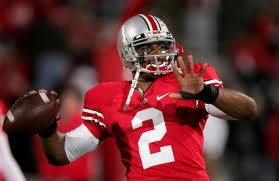
The recent ruling by the NCAA to suspend Terrelle Pryor and four other Ohio State Buckeye football players from playing in the first five games of the 2011 season for trading rings, apparel and other trinkets for services and cash is another glaring example of the not-for-profit organization’s ever- increasing lack of credibility.
Earlier this month the NCAA rules committee returned a finding of fact that Cam Newton’s father sent an agent to seek $180 grand to have his son play football at Mississippi State. However, a gaping loophole in the NCAA bylaws prevented them from taking any action against Newton as long as there was no proof he had any knowledge of this arrangement. And now in the case of the OSU players, the NCAA—in all its wisdom–has ruled that the infractions were so severe they merited a suspension for the first five games of the 2011 season–but all the players will still be allowed to play in this year’s 2011 BCS Sugar Bowl.
Any of this make since to you? If it doesn’t just follow the money–the NCAA earns plenty of it: A Sugar Bowl without Tyrrelle Pryor and the other key players would put a major ding in the TV ratings. The NCAA counts on the Nielsen ratings when it comes time to re-negotiate television rights.
Keep Following the Money
The NCAA sucks in millions of dollars of profit for itself, member institutions and corporate America. And they make all this money off the backs of athletes who they prevent from earning a single dime for their efforts. The NCAA’s profits are mainly generated through television rights, ticket sales and licensing fees for apparel which include jerseys embossed with popular player numbers—but not a cent of this profit is allowed to go to the athlete. Although let an athlete dare sell any “quasi-possession” deemed university property–as in the case of the Ohio State Buckeye players–and that player loses his eligibility.
Money is the bottom line reason for why the NCAA operates in the seemingly haphazard way that it does. Money explains why the NCAA is all over the place when it comes to its rules and regulations regarding amateurism and student-athlete eligibility in college athletics and the sanctions imposed for violating those bylaws.
I am all for amateurism but not when the NCAA and corporate America can make millions of dollars in profits while the athletes are left empty handed. It’s even more disturbing when you realize that a so called not-for-profit, tax exempt organization like the NCAA is allowed to horde nearly $350 million in liquid reserves.
NCAA Exploits the System Hiding Behind a Not-for-Profit Tax Exempt Status
The NCAA is classified by the IRS as a not-for-profit tax exempt organization. They are able to claim this status because they supposedly engage in a business activity that provides an endearing service to society—the NCAA states its primary tax-exempt purpose as “maintain intercollegiate athletics as an integral part of the educational program and the athlete as an integral part of the student body.”
If the NCAA reasoning for its tax-exempt status is to further higher education in the United States, why are scholarship athletes allowed to turn pro before they graduate? Football players are allowed to turn pro after their junior year; basketball players can turn pro after their freshman year and baseball and soccer players whenever they want—even during high school.
You would think that their not-for profit mission would dictate that all scholarship student-athletes complete at least four years of college before turning pro. On the other hand, why are only football and basketball players required to spend time in college, while baseball and soccer players can do as they please?
Answer: Money! Just keep following the money to find out what the NCAA is all about.
The NCAA does not want to water down the talent level of their two largest revenue generating sports–football and basketball. College baseball and soccer are money losers so the NCAA does not care about sustaining their talent pool. Thus no requirement for baseball, soccer and the other non-profit making sport athletes to spend time in college.
The Money
The NCAA is a not-for-profit tax-exempt corporation in name only and the the IRS and the U.S. Congress have been fully aware of this con for years. But corporate greed–greased by generous lobbyist–keeps this scam humming right along despite the valiant efforts, over the years, from some very vociferous critics.
Let’s look at the kind of money the NCAA hauls in on a yearly basis.
NCAA’s 2009 Fiscal Year Tax Revenues and Expenses:
- Revenues of $ 705,000,000 from television and marketing right fees, championship revenues, ticket sales and investments.
- Expenses $649,000,000
- Contingencies reserve 56,000, 000 (profits)
The NCAA’s slush fund contingencies reserve was implemented in 2004 to supplement their insurance policy against any 1.) Catastrophic loss 2.) Loss or decline in television rights, and/or 3.) Support to struggling member college sports programs. The fund has averaged collecting $41.5 mil per year. This fund alone has already amassed over $180 mil before calculating in the 2010 figures. Oh, and by the way, television right revenues have increased dramatically since 2004.
Remember this is all tax-free profit!
As of fiscal year 2009 the NCAA has accumulated over $350 million in tax-free liquid assets. Its former executive director Myles Brand made nearly $1.2 million in salary and bonuses in 2009. University of Texas’ Mack Brown–the highest paid coach in college football—boasts a base salary of over $5.1 million. Of course, unlike the athletes, college coaches can also subsidize their incomes through commercial advertisement. All this money is generated off the backs of the athletes who are prevented from making any money for their efforts even though the NCAA’s own figures state that only 1.2 % of all college athletes will go on to make money in professional sports.
The Student-Athlete
I’ve heard and read many comments from people who can’t fathom how Terrell Pryor and several of his teammates could sell their “precious” bowl rings, trinkets and apparel for cash and services. Having lived as a scholarship athlete and having a son and many friends and acquaintances go through the same process—a scholarship does not pay the bills or for a plane or bus ride home or for an extra pair of jeans or even a tattoo if you so desire. I can tell you it probably wasn’t a very easy thing for them to let those things go. Unfortunately, the NCAA–to this day–has not budged on providing a livable stipend to scholarship athletes. What’s even worse in my eyes is the club of million-dollar-head-coaches who stand silent on this issue even though they see these players struggling financially on a daily basis, and have been to their parent’s home and know that many of them are barley capable of meeting their own living expenses–let alone provide income to support a son in college.
The members of the million-dollar-coach-club are the first to cry for even more ridiculous sums of money or to jump ship to find it. But you will never hear them bleep a single word for the right of their players to receive a livable cash stipend from the largess of the NCAA. Like bumps on a log they continue to go along with the status quo just as long as they’re getting paid.
More Whys
How is the NCAA allowed to profit from merchandise like jerseys pressed and stitched with a popular player number and video games that include their likeness and not haveto share a cent of the profit with the athlete that number represents? Why are coaches—already making millions–allowed to make more through advertisement but the college athlete is not? Why the ridiculous rules that say a college coach cannot even givea kid a ride to practice or to an airport or bus station? Why can a parent ask for $180 grand for his son to play at a school, but the son faces no sanction, yet a player who sells items he earned and were given to him receives a five game suspension? And last but certainly not the least, why are black kids predominately the recipients of your most severe sanctions and why in 2010 are there still only a few (4) black head football coaches at automatic-qualifer (AQ) BCS conference schools?
There are currently 64 AQ BCS football programs; the 4 black head coaches represent only 6.25% of the this total. Based upon the long history of college football, over the past five decades, the once segregated sport has seen a dramatic increase in the overall percentage of black athletes, yet the power structure (executives, administrators and head coaches) of college football and the NCAA remain entrenched lily-white good old boy institutions.
The New Plantation
College football and basketball programs have become nothing more than sophisticated plantations where the athletes are housed and fed as long as they perform. Qualifying prospects are given a one year scholarship that’s renewable only if they perform. Or–especially in basketball—as long as a new coach doesn’t come in and take it from them just because they don’t fit their style of play. Incoming freshmen are directed towards easy credit courses so they can maintain a minimum grade point average established by the university. But the NCAA has no real mandate requiring that these athletes have to declare a major. They do, however, have a rule that penalizes a sports program for not graduating at least 50% of it’s scholarship athletes. Colleges violating this standard have a certain number of future scholarships taken away from their allotment.
These programs are more akin to professional minor league proving grounds. The sad reality though is that 99% of these student athletes will never see the professional ranks. The problem with all this is that millions are being made at their expense and the coaching establishment goes along with the ride. These coaches come into a prospect’s home and promise their parents they are going to take care of their boy. Yet the coaches sit silently by making millions of dollars, while the inequity in the system causes many of their players and their family’s hardships. Unfortunately, most coaches are simply too preoccupied with their own well-being to fight for changes in the NCAA policies and bylaws that would enhance their players’ well being.
The population as a whole is jaded on this subject. Some believe college student-athletes are spoiled prima donnas that already receive enough with a free college education. A few will point to the fact that they went to school full-time and worked full-time and took out loans to pay for a degree. Bravo. Just know that the hours required to practice and play football or basketball at the division 1A level are equivalent to any full-time job—if not more. More to the point, millions of dollars are being made from the student athlete’s efforts on the field of play. And that is the main point here. Not even counting what a particular university realizes in profits, the NCAA averages a profit of over $40 million per year, but the student-athlete is not allowed to share in this wealth—even if his number, image and name and efforts are being used to sell the tickets. That’s a plantation! It’s like the cotton that helped fuel the United States economy during slavery:
The NCAA and corporate America, like the big bankers in the North during slavery, make millions and the plantation owners (universities) get their piece of the pie and the slave masters (coaches) are well-rewarded, while the cotton pickers (players) get a roof over their heads and food to eat and the carrot of a degree if they can survive through it all. The latest study conducted by The Institute for Diversity and Ethics in Sport (TIDES) at the University of Central Florida shows that 60% of the black players on 70 2010 bowl bound FBS (D-1A) football teams will earn a degree versus 80% of the white players. Since this study was first conducted back in 2006, the graduation rate of black D-1A football players has increased nearly 5% points but the gap between white and black graduation rates has also increased.
In closing, I don’t understand why the United States government continues to allow the NCAA to operate as a not-for-profit organization when its practices–clearly–have all the earmarks of a for-profit organization: They have different amateur status policies for their money making sports programs football and basketball where players are forced to wait until a specific number of years after high school before they can attempt to earn a living in those sports, while athletes participating in baseball, soccer and other non-revenue generating sports are not required to do the same. Furthermore, the NCAA prevents student-athletes from realizing any revenue from the use of their images, likeness and or efforts, while the NCAA and corporate America collect millions of dollars from the same said process. and despite their enormous profits they continue to deny a livable subsistence allowance to these profit generating student-athletes.
It’s long overdue for the executive members of the NCAA to take a serious look at its plantation-like practices, policies and rules when it comes to the student-athletes who are responsible for their livelihood. Moreover, it’s also high time that the U.S. Congress take a hard look at the financial records, practices and mission effectiveness of a supposed not-for-profit organization that is allowed to horde these large sums of tax-free money and blatantly discriminate against athletes in revenue generating sports while denying them any and all profits in the present and the future from the use of their likeness and or efforts as a student-athlete.
NCAA Pushes Sale of #2 Buckeye Jerseys
Finally, for those that have read this far, please visit the NCAA.com website and go to this page: http://www.shopncaasports.com/NCAASports_Ohio_State_Buckeyes_Jerseys to see all the Ohio State #2 jerseys—Terrelle Pryor’s number—that the NCAA displays for sale. Those #2 jerseys sell from as low as $41.95 a pop up to a whopping $150.00 each. I wonder how much money the NCAA has made in the last several years from selling those #2 jerseys?
It’s ironic that the NCAA can make tens of thousands of dollars selling jerseys embossed with the numbers of a popular player, but the athlete that the number represents gets none of the profit nor is he permitted to sell his own merchandise.
Think about it.

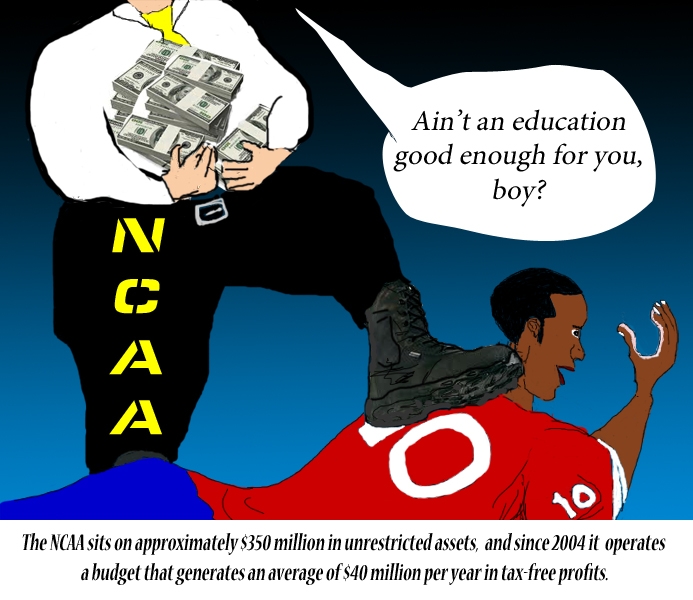
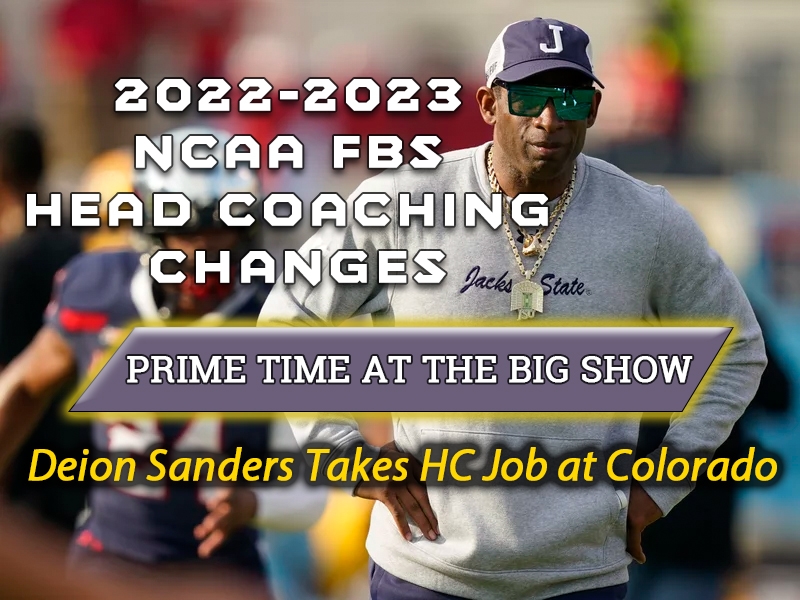
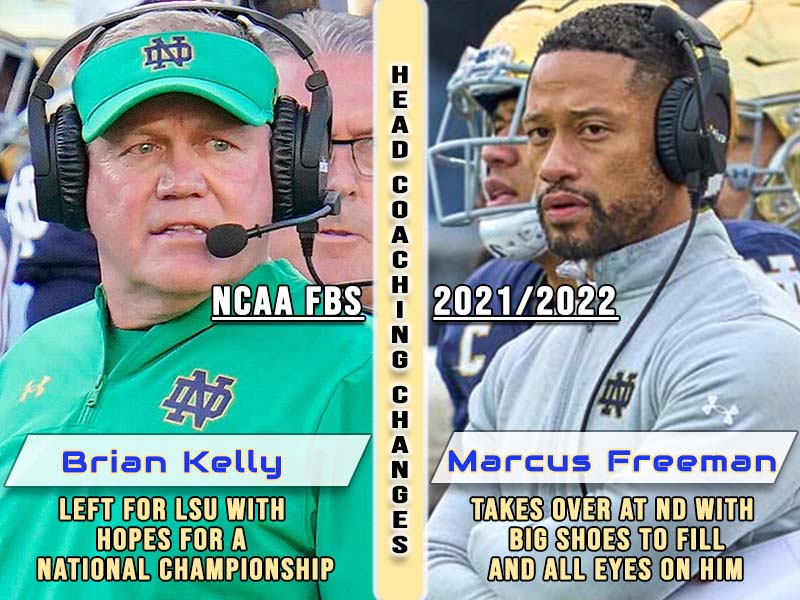
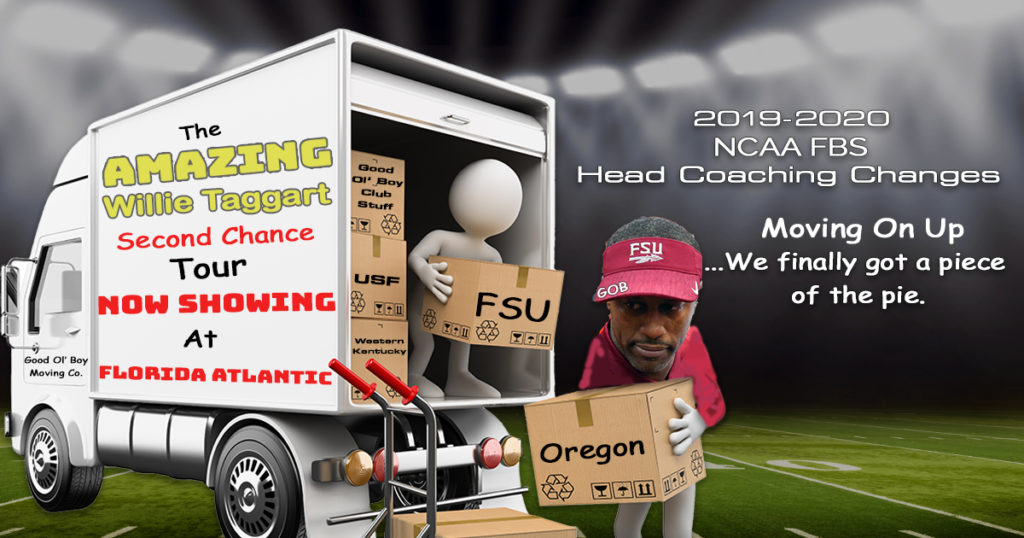
truthbtold
December 29, 2010 @ 11:20 pm
I liked to see a follow up to the graduation rates of D-1 athletes to further prove your point. Dig deep Mr Blogger, dig deep!
truthbtold
December 29, 2010 @ 11:17 pm
Finally! The real reality of college athletics is exposed. This is one of the best if not the best piece of investigative work I’ve ever seen. I applaud you for your due diligence and facts. You’ve obviously did your home work and took time to expose this hideous crime which exist in the land of greed. Capitalism at it’s finest!
Let’s face it folks – this is all about money/business and not about truly graduating 90% of it’s student athletes. What a joke to suspend the Ohio State players for five games next year and not starting this at the bowl game. Get the picture folks. The bowl game is about MONEY. ENTERTAIMENT! Pure and simple. TV rights, endorsements all at the expense of the GAME! Who’s the game really being played on – the players – zip in money and we wonder why the do what they do. The game is being played by Corporate America and bookies. It’s being played on you the viewers who pay for cable or DTV. Why? You’re glued to the idiot box and then you wish to fault the player for any miss conducts or miss behaviors. As much as you may hate or have hated Ernie Chambers back during his advocacy for stipends for the Student Athlete…..he was RIGHT! If these kids had more money these infraction would unlikely occur. So don’t blame the athlete who are kids desiring to have a little money in their pockets. So they get pimped out by the gear they get to wear. The freebies. So what? It’s not enough! It’s not enough espeically when over half these kids come from single parent households or lower class incomes. They just want what the the big boy administrators have! Money in their pockets. (Please forgive my grammer and mispelling) If only you had “spell checker”. However, much respect to this blogger for calling a spade a spade!